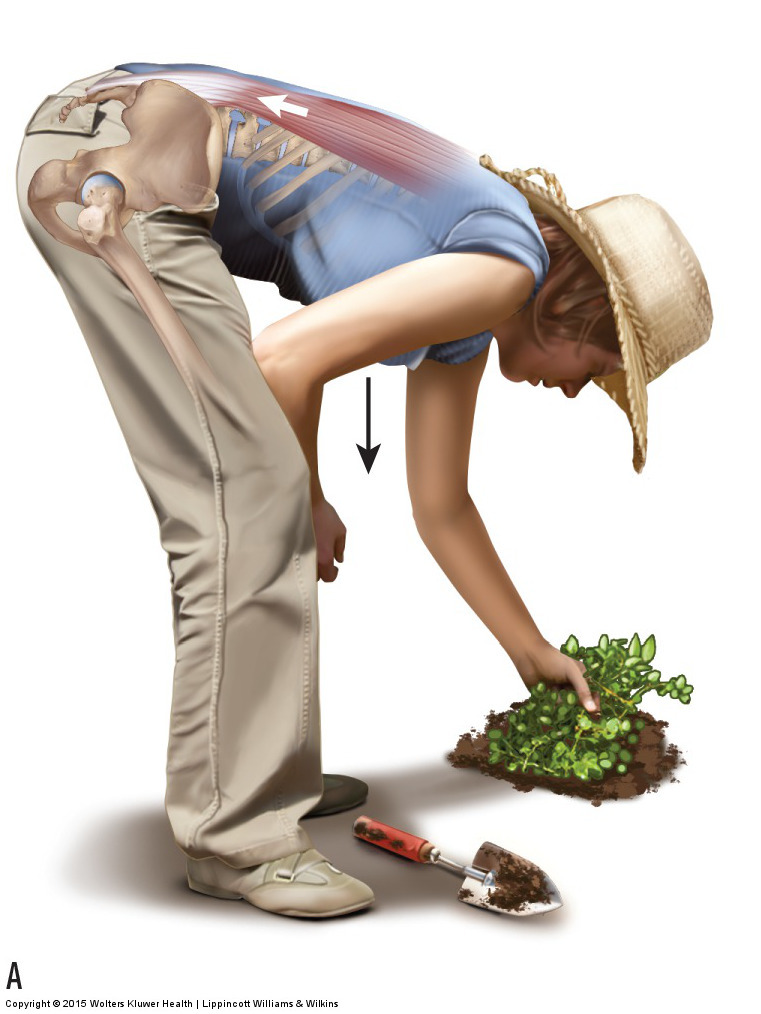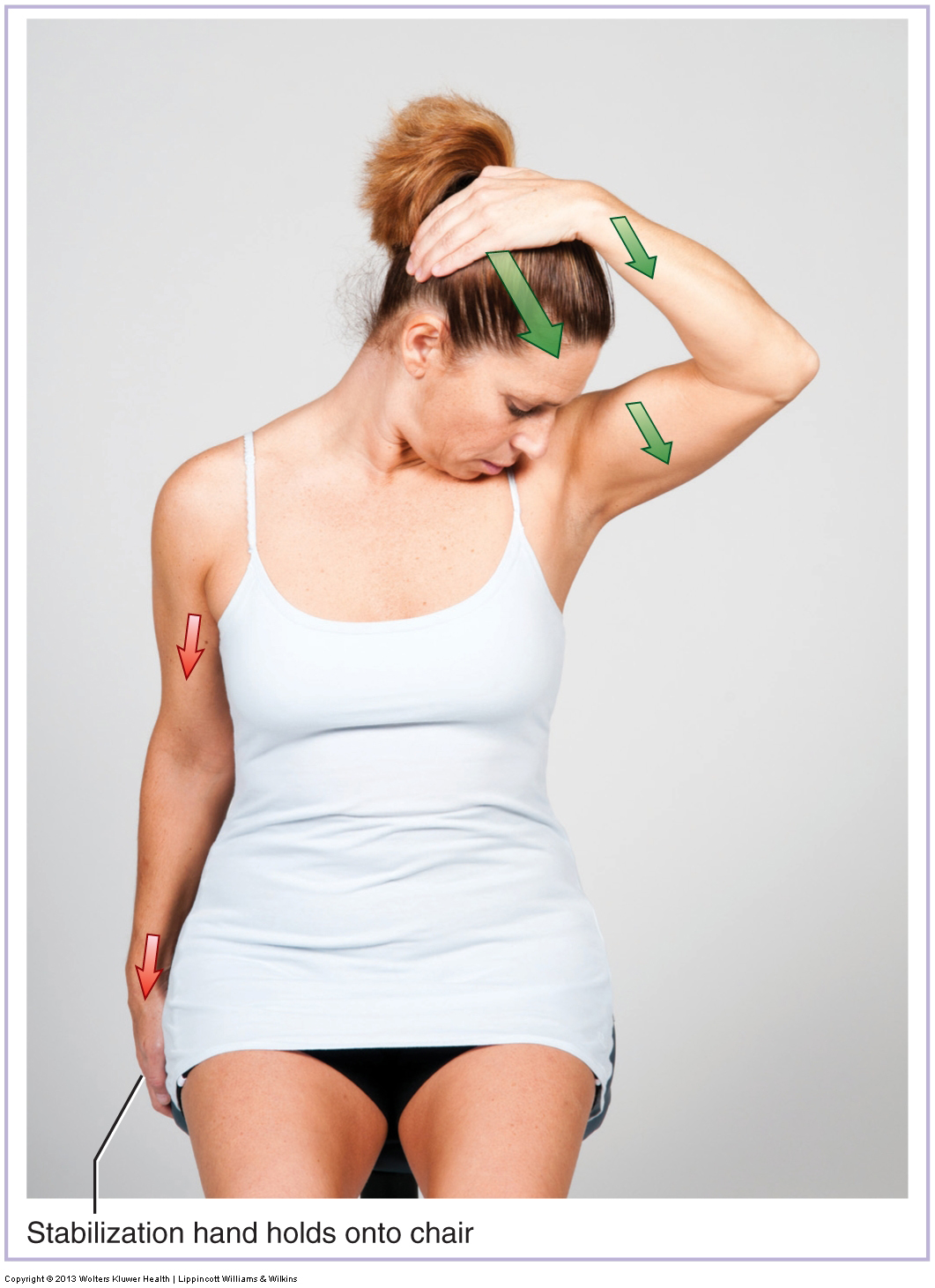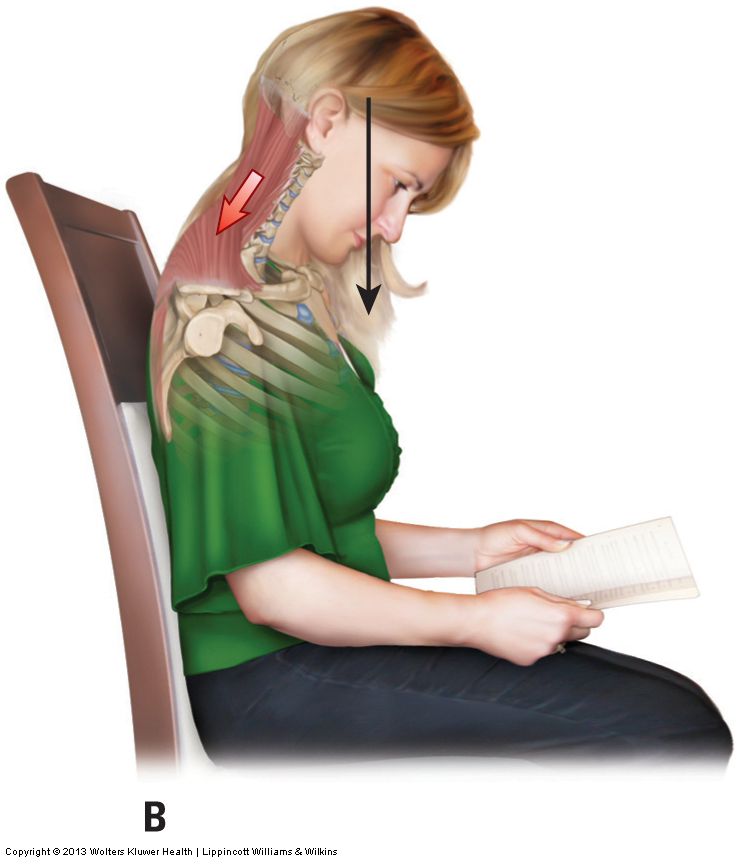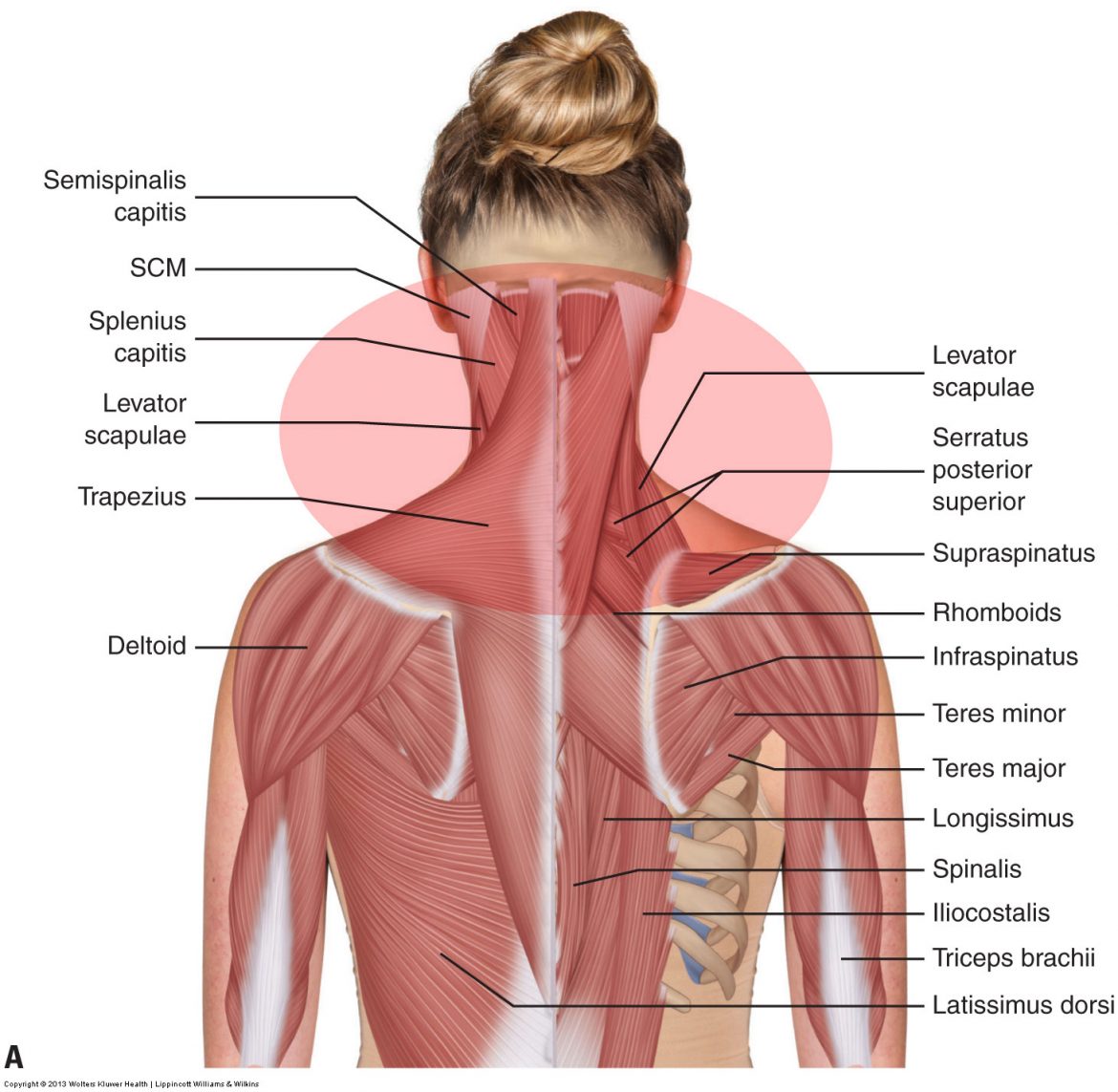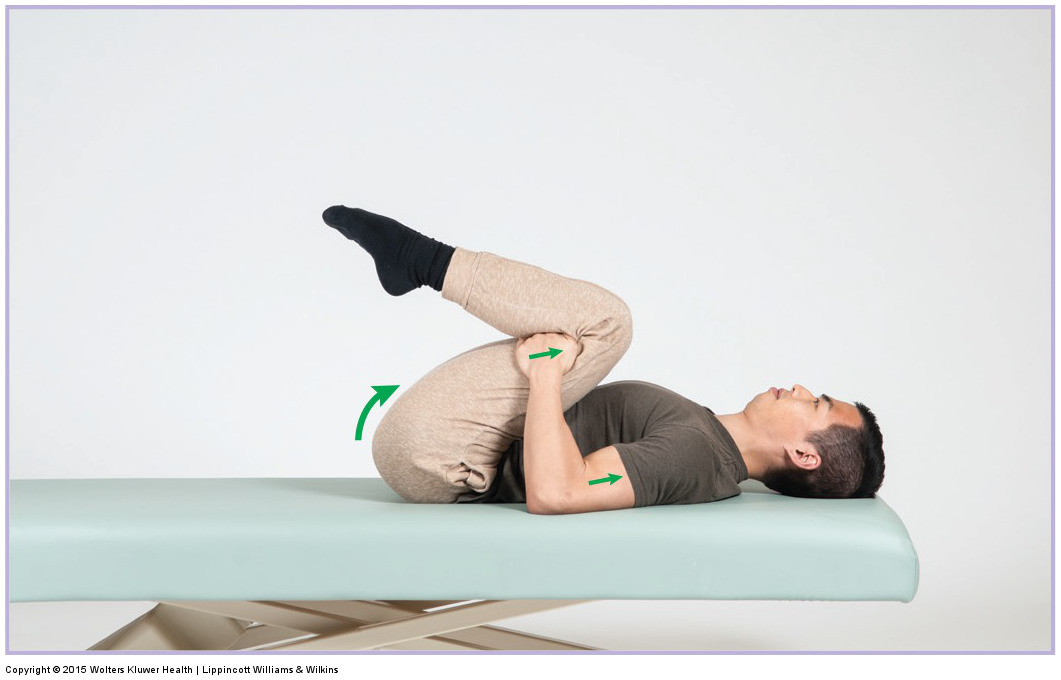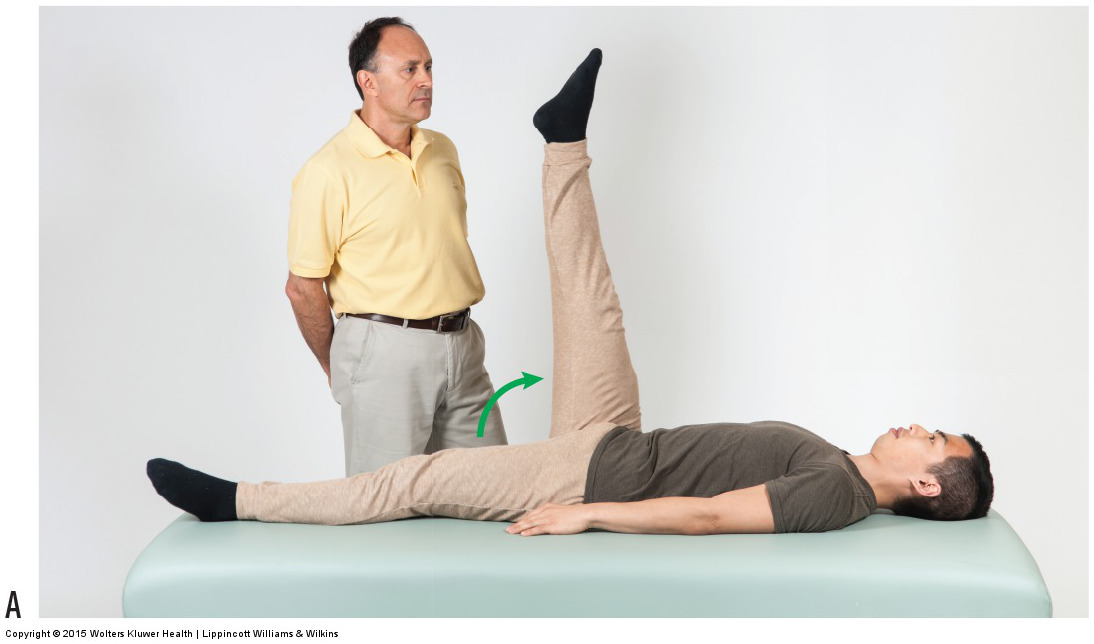Four of the most common causes of tight muscles of the low back (or anywhere in the body) are: overuse, splinting, adaptive shortening, and overstretching.
What are the self-care and medical approaches to tight spasmed neck muscles?
Self-care application of heat and stretching is an extremely important part of the treatment regimen for clients with spasmed neck muscles.
Signs, symptoms, and assessment (diagnosis) of spasmed muscles in the neck
The most common signs and symptoms of spasmed muscles of the posterior neck are pain, a feeling of tightness, and restricted motion.
What are the causes of muscle spasming in the neck?
Muscle spasming of the neck occurs because of its role in neck movement and posture, as well as it role in upper extremity movement and posture.
Self-care and medical approaches to tight spasmed muscles in the low back
Self-care for the client/patient with low back muscle spasm should include moist heat followed by stretching. Double knee to chest stretch is beneficial.
What are the causes of low back muscle spasming?
Low back muscle spasming is common because lumbar extensor muscles must contract eccentrically, isometrically, and concentrically whenever we bend forward.
Signs, symptoms, and assessment of spasmed muscles in the low back
The assessment/diagnosis for low back muscle spasming begins with the verbal history and ROM and orthopedic assessment, and is confirmed with palpation.

